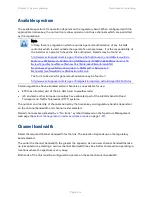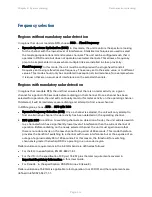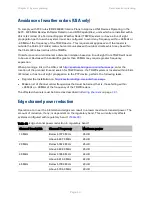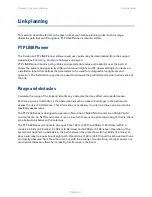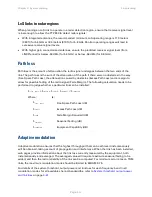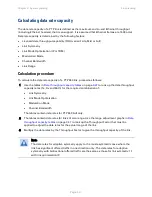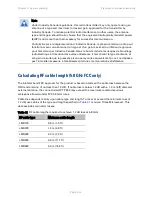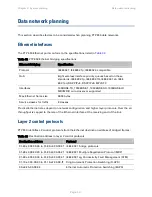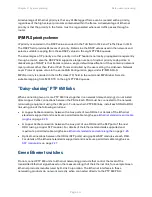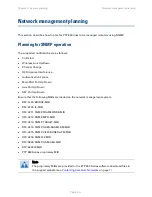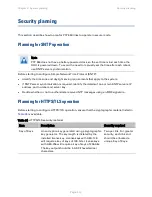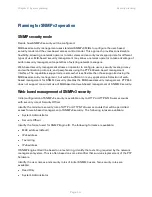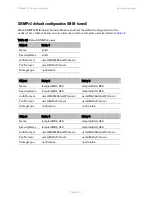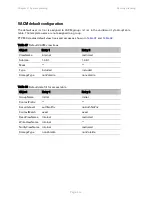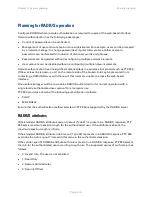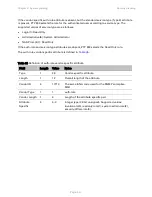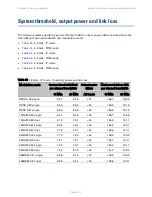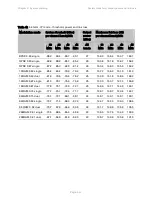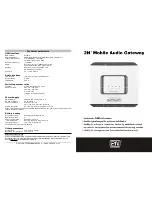
Chapter 3: System planning
Data network planning
Ethernet port allocation
Decide how the three Ethernet ports will be allocated to the customer data network, in-band
management and out-of-band local management, based on the following rules:
•
Ensure that one port is allocated to Data Only or Data and In-Band Management. This port
should be associated with the customer data network.
•
Ensure that the remaining ports are set to Disabled or Out-of-Band Local Management.
•
Ensure that at least one port is allocated for in-band or out-of-band network management. This
port should be associated with the management network.
Note
The Main PSU port is always used to supply power to the ODU, even when it is
Disabled for the purpose of Ethernet port allocation.
VLAN membership
Decide if the IP interface of the ODU management agent will be connected in a VLAN. If so, decide
if this is a standard (IEEE 802.1Q) VLAN or provider bridged (IEEE 802.1ad) VLAN, and select the
VLAN ID for this VLAN.
Use of a separate management VLAN is strongly recommended. Use of the management VLAN
helps to ensure that the ODU management agent cannot be accessed by customers.
Priority for management traffic
Choose the Ethernet and IP (DSCP) priority for management traffic generated within the ODU
management agent. The priority should be selected so as to be consistent with existing policy on
priority of management traffic in the network. Use of a high priority is strongly recommended to
ensure that management traffic is not discarded if the link is overloaded.
Ensure that the priority assigned to management traffic is consistent with the quality of service
scheme configured for bridged Ethernet traffic. If QoS for bridged traffic is based on the IP/MPLS
scheme, set the DSCP management priority to map to a high priority queue. If QoS for bridged
traffic is based on the Ethernet scheme, set the VLAN management priority to map to a high
priority queue.
Page
3-28





